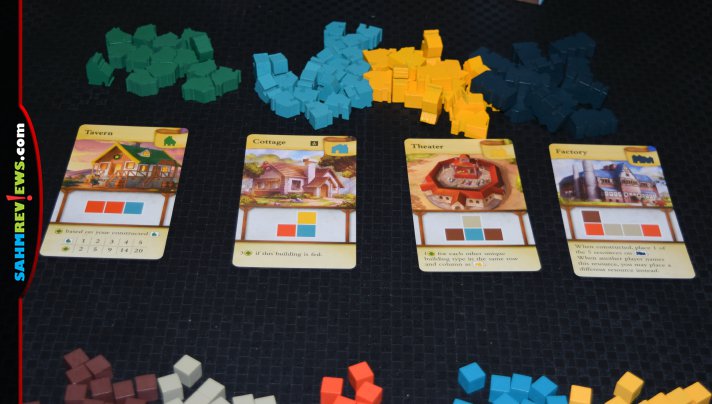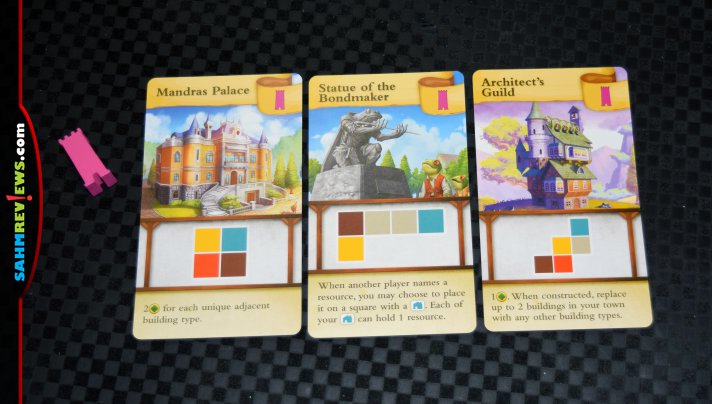Tiny Towns Family Game Overview

Throughout the course of my life, I’ve been fortunate to live in a variety of types of cities. I grew up in a rural area and went to the elementary school in a small town that had no stoplights, a volunteer fire department and a general store that was a combination of a market and bait shop. That’s all there was. The next nearby town had a school, bank, general store, gas station, bar, community center and a couple of churches. In the time since then, I’ve lived in a medium sized metro area and Los Angeles. I can confidently say that I’ve experienced a variety of towns and cities. While most people think a large city offers the most benefits, there really is a trade-off. Small towns have their perks too.
As I was playing Tiny Towns from Alderac Entertainment Group, I recognized the comparison to board games. A lot of people think that for a game to be complex and good, it needs to take up the whole table and have a lot of pieces. That’s true in cases such as Lisboa and Lorenzo il Magnifico. They are both excellent games. But there’s also an elegance in a game that thrives in its simplicity. Gekitai, Hues and Cues and Hanamikoji are a few of those examples with limited pieces and instructions. In Tiny Towns, you’ll find a mix of simplicity and complexity as you serve as mayor of a tiny town in the forest.
Give each person a board that will serve as their small town. Place the Cottage card in the center of the table along with one randomly selected card from each unique type (based on the symbols on the back of the card). The various building types and resources are set within reach of all players to form a general supply.
Each building not only requires different resources – and a different shape – but it also has a different effect or requirement. As an example, you get nine victory points for building three taverns. Farms don’t score points, but they feed cottages which allows them to score points. Warehouses hold resources, but score negative points for doing so.
You can increase the difficulty of the game by incorporating Monument cards. These cards offer a special type of building that is unique for each player. Some result in additional scoring at the end of the year while others give a special ability to use throughout the game.
Players take turns acting as the Master Builder where they name one of the game’s resources. Everyone will simultaneously take that resource cube and place it on an empty square on their player board. Once you place it, you aren’t allowed to move it, but you can remove it by using it to construct a building.
In order to do that, you need to match one of the building construction plans on the cards in the center of the table. Not only do you need the proper resource allotment, but those supplies need to be in the right shape on their city board. Select what you are constructing, remove the related resources and replace one of the spaces with the wooden token for the chosen building
Once everyone has completed this optional building step, the job of Master Builder rotates to the next player. The new Master Builder selects a resource and the process continues. The game continues until you’ve run out of places to place a resource. Once all players have filled up their town, the game ends and the scores are calculated to determine the best Tiny Towns mayor.
Tiny Towns is marked as ages 14+, but it’s a family-friendly game. Younger players who understand the concepts of polyomino placement on a grid can easily learn how to play with some instruction. Copies are available on Amazon and direct from Alderac Entertainment Group. Check with your local game store for availability as well. Visit AEG on Facebook and Twitter to find out about upcoming releases and product restocks.
What’s the smallest town you’ve been to and what did you visit there?











I have been to a few really small towns in Kentucky and in Tennessee. The only small town that comes to mind is Bell Buckle, TN